Idea by
Martin Grabner
Call for ideas 2018
Take back the Bollards!
Take back the Bollards!
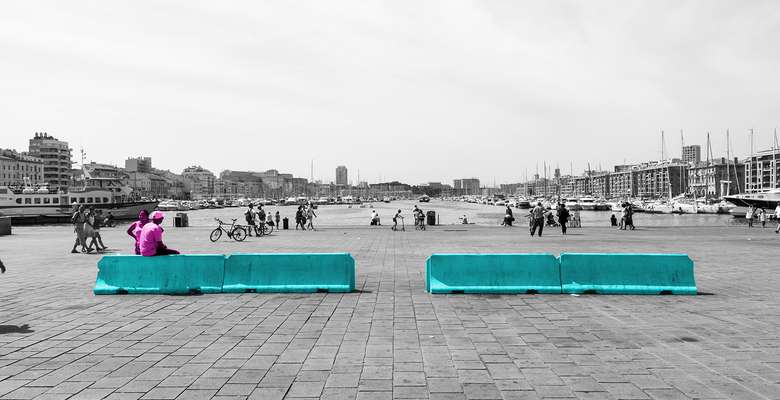
The public sphere is controlled, transformed and restricted by barriers, surveillance and the persistent presence of armed guards. Public spaces are fortified, fragmented and turned exclusive; everyday democratic practice is undermined. The city is “secured from the public rather than for it” (Marcuse). The shift in attention from specific buildings to „soft“ public spaces both by terrorism and security industry opens up the chance to regain the sovereignty of interpretation of public space. The radical and strategic re-conceptualisation of public spaces including the hijacking of the emblems of security – bollards, concrete planters, and seating, etc. – can decisively contribute to both attractive and save spaces. While beautification and concealment remain superficial, alternative spaces balanced between openness and safety result in a strong human presence in the spirit of Jane Jacobs. They make the production and appropriation of urban space again intrinsic aspects of our cities.
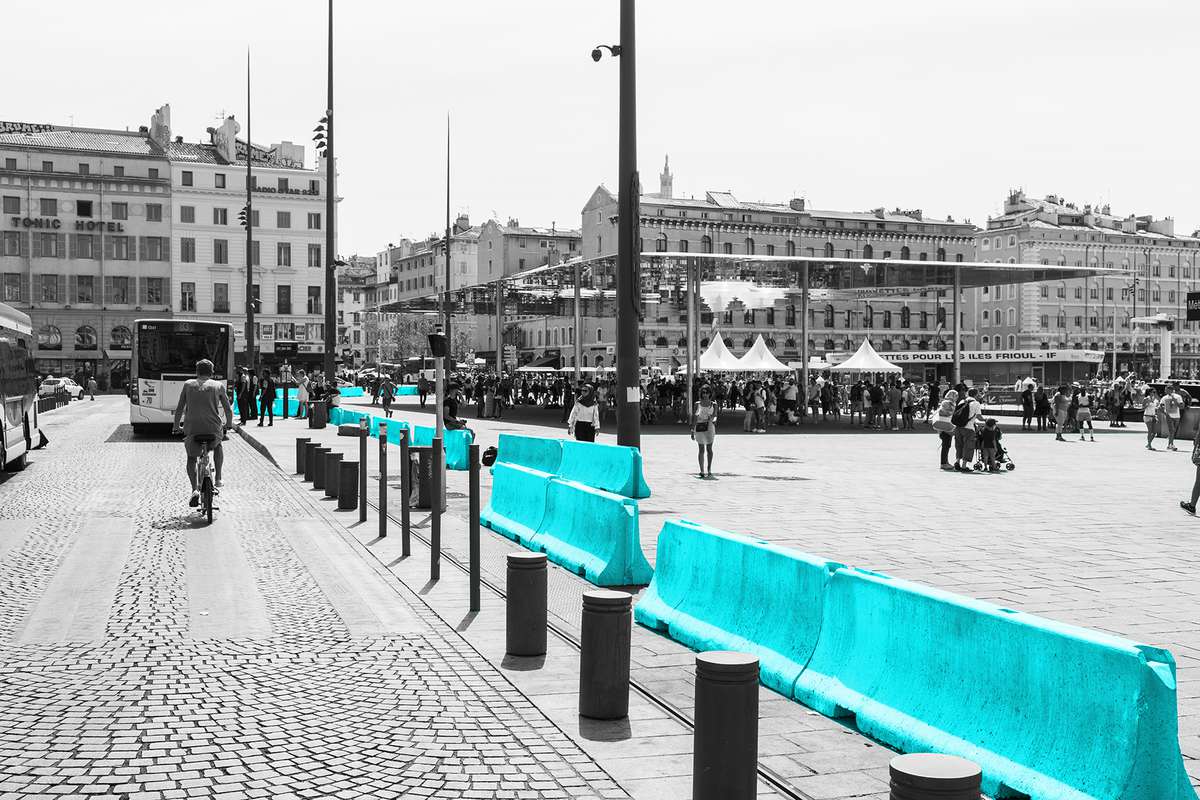
At Vieux-Port in Marseille, two rings of barriers surround the 2013 established pedestrian zone with the giant wheel and the Miroir ombrière: the original row of bollards preventing the cars from occupying the port dedicated to pedestrians, and a second dense row of concrete slabs placed there temporarily after the truck attacks in 2016.
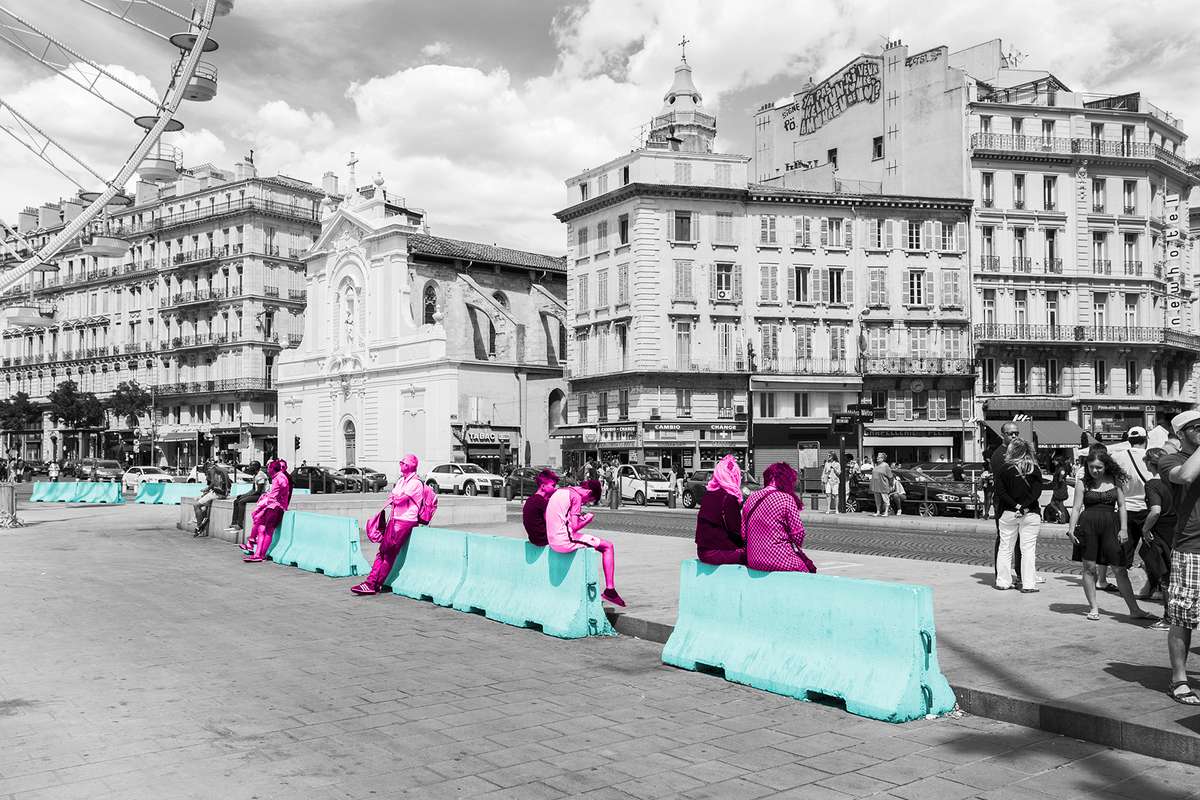
Not very effective they remain widely symbolic, intended to satisfy the perceived security of the people – no matter if the militarised cityscape may affect the exact opposite. They expose, however, the necessity of public seating in the area as they are appropriated by residents and tourists while waiting for the bus, having lunch, gathering or enjoying the spot.
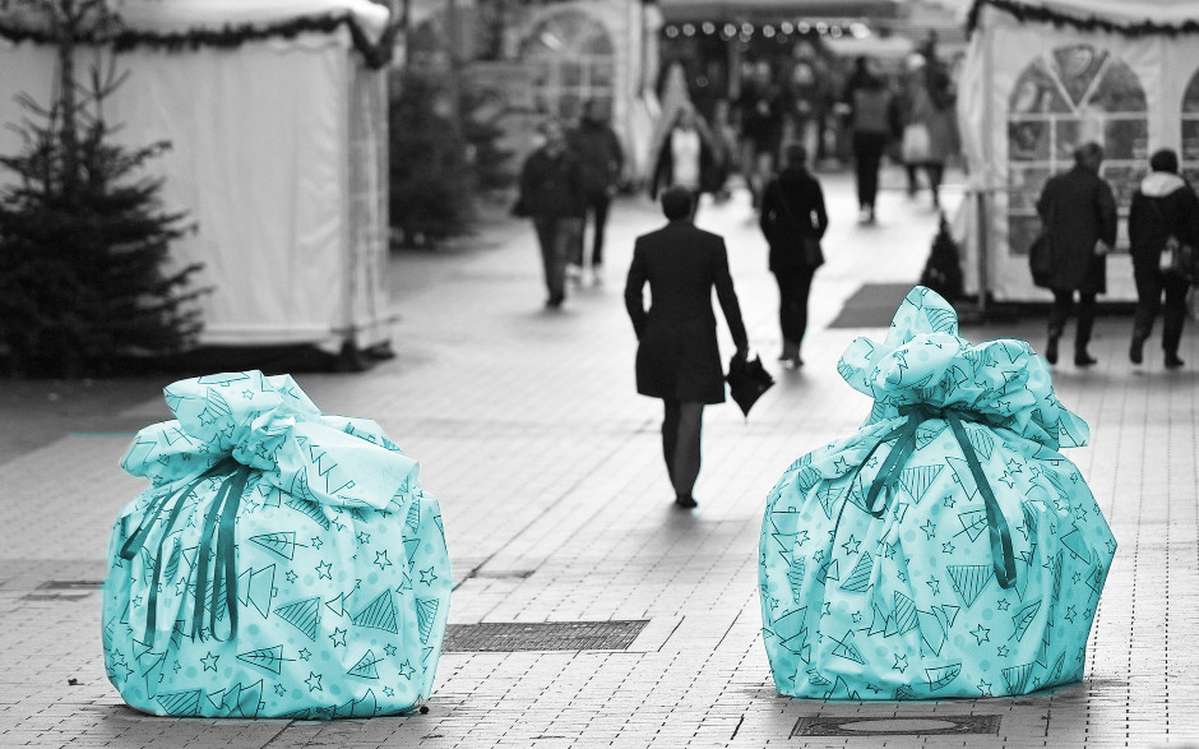
After the attack on a Christmas market in Berlin 2016 many cities quickly placed concrete barriers. 2017 most of them decided to hide/decorate them, in many cases as ridiculous big Christmas presents. Besides the reduction of Christmas to pure materialism, the question of the visibility of security measures is crucial: The slabs are not very effective, consequently, they function as symbolic placebos for the citizen. If so, hiding them is at least questionable.
(Photo @ AP, via faz.net)

In August 2017, in the middle of the election campaign, a debate on plans to protect the Austrian chancellery and Hofburg in Vienna with concrete wall arose in the tabloid. Instead of an informed debate on the necessity and impact of such security measures, a political debate developed and the wall was replaced by bollards. Potentials for improving the public space in front of the two buildings which includes a new deserters memorial were not even briefly discussed.
(Graphic @ kurier.at)
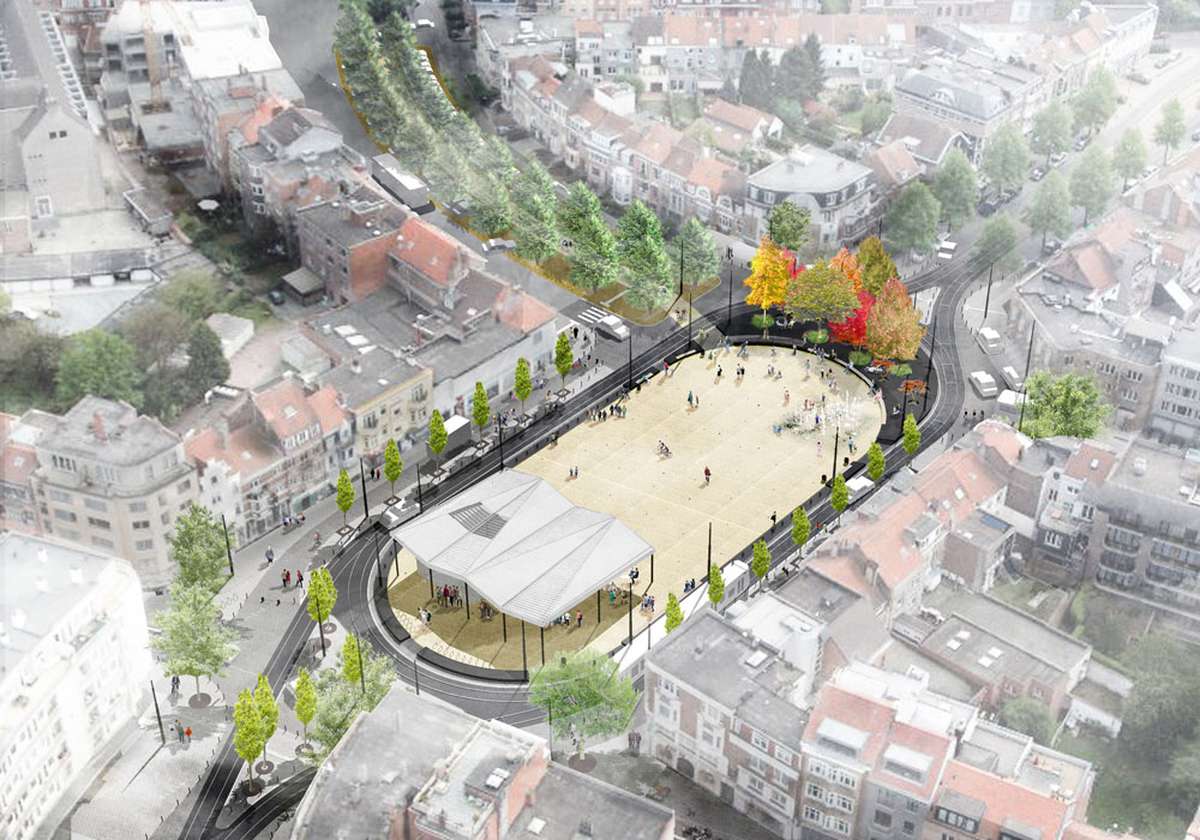
The new design of Place Dumon in Brussels by Artgineering includes a wall as spatially determining element. What looks like a security measure in fact creates two areas with different characters: A central square with a high quality of stay and around it a zone with (calmed) mobility. The design origins before the series of truck attacks and the following security debate, however, it creates an attractive and safe public space suited to host various social activities.
(Graphic @ Artgineering)
Take back the Bollards!
Take back the Bollards!

The public sphere is controlled, transformed and restricted by barriers, surveillance and the persistent presence of armed guards. Public spaces are fortified, fragmented and turned exclusive; everyday democratic practice is undermined. The city is “secured from the public rather than for it” (Marcuse). The shift in attention from specific buildings to „soft“ public spaces both by terrorism and security industry opens up the chance to regain the sovereignty of interpretation of public space. The radical and strategic re-conceptualisation of public spaces including the hijacking of the emblems of security – bollards, concrete planters, and seating, etc. – can decisively contribute to both attractive and save spaces. While beautification and concealment remain superficial, alternative spaces balanced between openness and safety result in a strong human presence in the spirit of Jane Jacobs. They make the production and appropriation of urban space again intrinsic aspects of our cities.
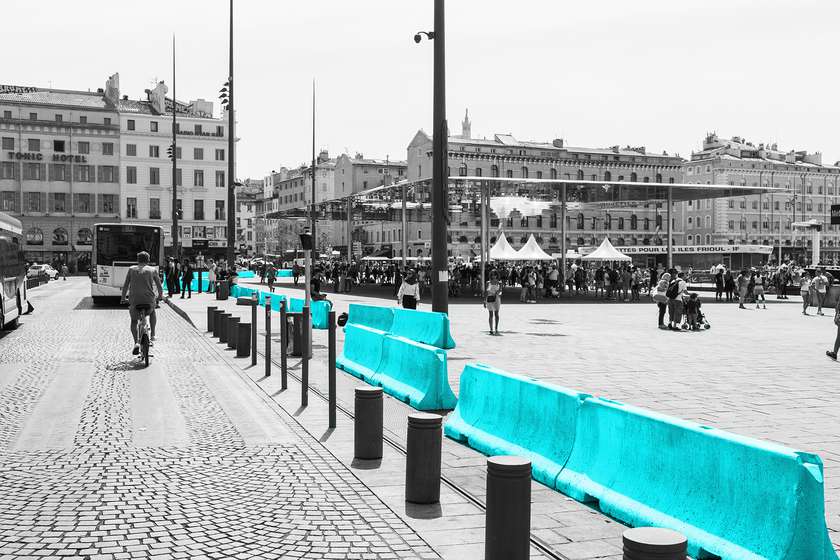
At Vieux-Port in Marseille, two rings of barriers surround the 2013 established pedestrian zone with the giant wheel and the Miroir ombrière: the original row of bollards preventing the cars from occupying the port dedicated to pedestrians, and a second dense row of concrete slabs placed there temporarily after the truck attacks in 2016.
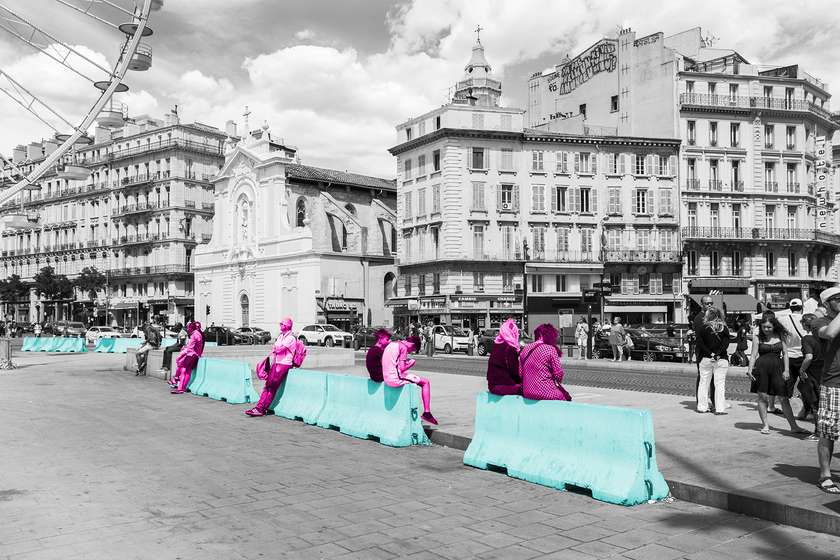
Not very effective they remain widely symbolic, intended to satisfy the perceived security of the people – no matter if the militarised cityscape may affect the exact opposite. They expose, however, the necessity of public seating in the area as they are appropriated by residents and tourists while waiting for the bus, having lunch, gathering or enjoying the spot.

After the attack on a Christmas market in Berlin 2016 many cities quickly placed concrete barriers. 2017 most of them decided to hide/decorate them, in many cases as ridiculous big Christmas presents. Besides the reduction of Christmas to pure materialism, the question of the visibility of security measures is crucial: The slabs are not very effective, consequently, they function as symbolic placebos for the citizen. If so, hiding them is at least questionable.
(Photo @ AP, via faz.net)
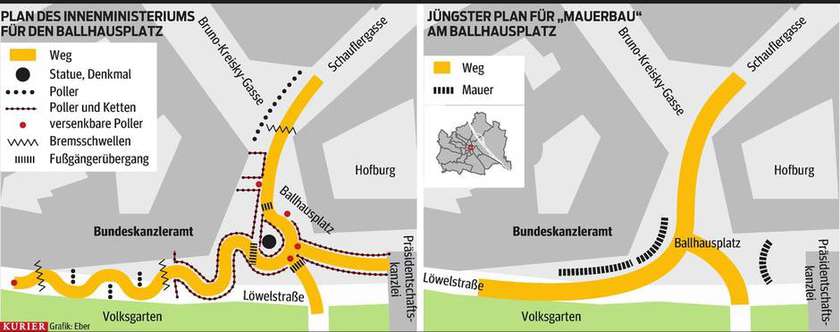
In August 2017, in the middle of the election campaign, a debate on plans to protect the Austrian chancellery and Hofburg in Vienna with concrete wall arose in the tabloid. Instead of an informed debate on the necessity and impact of such security measures, a political debate developed and the wall was replaced by bollards. Potentials for improving the public space in front of the two buildings which includes a new deserters memorial were not even briefly discussed.
(Graphic @ kurier.at)
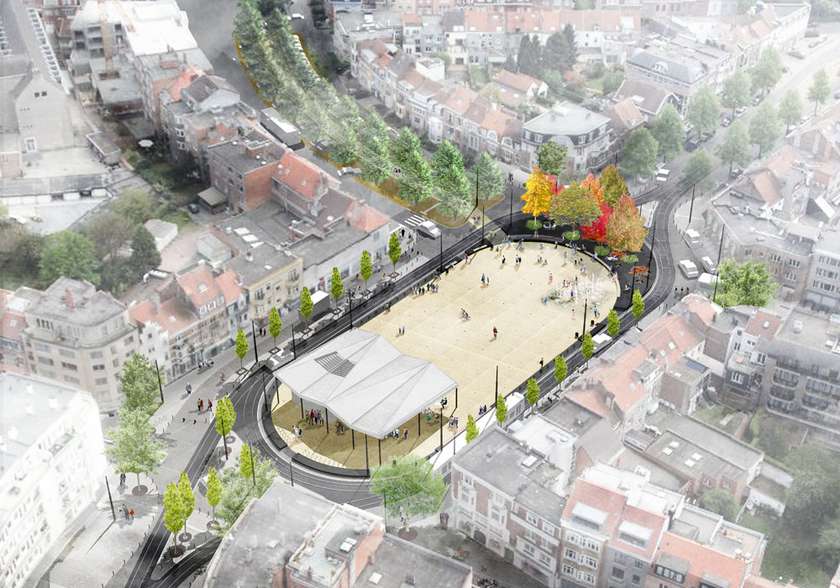
The new design of Place Dumon in Brussels by Artgineering includes a wall as spatially determining element. What looks like a security measure in fact creates two areas with different characters: A central square with a high quality of stay and around it a zone with (calmed) mobility. The design origins before the series of truck attacks and the following security debate, however, it creates an attractive and safe public space suited to host various social activities.
(Graphic @ Artgineering)